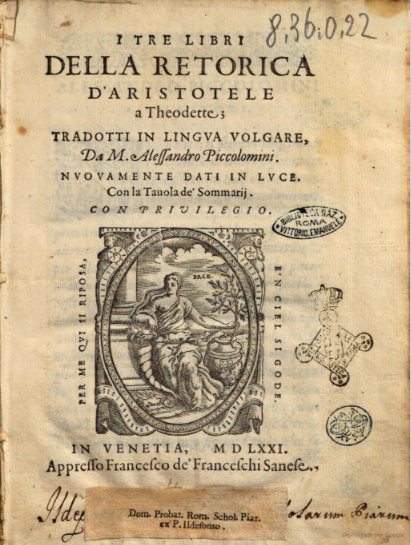
Libraries
Libraries
Three books from the Rhetoric of Aristotle, translated by Alessandro Piccolomini
During the Renaissance, the different Rhetorics –word understood as a synonym of manual– proliferated in different kingdoms, and, thus, stood in the shelves of its literate cities. While the Retórica of Aristotle had better luck than his Poética (that was not commented by his contemporaries nor carefully read during the middle age), during the fifteenth and sixteenth centuries the Retorica of Aristotle was in the libraries with other Rhetorics written in Latin.
This Italian version of the humanist Alessandro Piccolomini, also author of Anotaciones a la Poética de Aristóteles, was famous among his contemporaries. Although the sixteenth and seventeenth centuries were witness of an specialization in rhetoric (you could find them for the composition of epistles, sermons, for performances in the court and in the legal area), Aristotle’s rhetoric remained as an unquestionable authority. The Piccolomini’s contribution consists in his translation —defined as paraphrase—as in his comments on it.
In Folio 522v of the Inventario de bienes (Inventory of goods) of the Inca Garcilaso, you can discover the presence of two Aristotle’s works: the Dialéctica and the Retórica, that José Durand attributed to Alessandro Piccolomini’s version in his 1948 study of the Library of the Inca. Piccolomini’s work was worth to the author of the Comentarios reales as an authority for the literary composition and as a model of translation.

